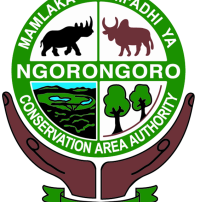Contents
- Olduvai Gorge
- Bagamoyo
- Stone Town
- Kilwa Kisiwani
- German Boma
- Mwalimu Julius K. Nyerere Museum
- Isimila Stone Age Site
- Engaruka
- Amboni Caves
- Askari Monument
- Mzizima
- Ruins of Songo Mnara and Kilwa Kisiwani
- Uhuru Torch Monument
- Livingstone Memorial
- Bismarck Rock
- Old Fort
- Maruhubi Palace Ruins
- Bongoyo Island
- Slave Market
- Conclusion
Tanzania is one of the best countries in Africa with great history and culture.
Tanzania’s culture is a mix of Indian European, and Arabs influence for coastal.
There was a long trade relationship between Tanzania and the Far East.
This relationship contributed to a large extent to the history of this country.
But after colonialism in 1961, some places were either abandoned or handled by the state.
The history of these places is very profound for visitors and are even listed by UNESCO.
In this article, we will highlight the best historical sites to visit in Tanzania.
Olduvai Gorge
Olduvai Gorge is a very important site for archeology in Africa.
Well known as the cradle of mankind, Olduvai Gorge is located in Ngorongoro.
The fossil remains found at Olduvai Gorge date back over 3.5 million years. Visitors to this place can see the excavation site.
The small historical museum at this place also exhibits human evolution.
Visiting Olduvai Gorge best combines with parks like Serengeti or Ngorongoro Crater. Learn more about Olduvai Gorge
Bagamoyo
This is one of the oldest historical cities in Tanzania.
Bagamoyo was once a thriving port and a major center for the slave trade in East Africa.
Today, Bagamoyo remains with several historical buildings including the Bagamoyo Old Fort.
Visitors to this place can also visit Caravan Serai, and Kaole ruins, and stay with locals.
Whoever visits Bagamoyo, the view of this town tells the story of what happened in the past. Learn more about Bagamoyo
Stone Town
Stone Town is the heart of Zanzibar and is one of the UNESCO World Heritage sites.
The historical buildings, Mosques, and the narrow street path depict the history.
The history of Zanzibar dates back to the 13 century.
This is when people from the Far East traded with Zanzibarians.
The architecture of the building was influenced by the Arab people who settled here.
If you visit Zanzibar, you get a chance to visit many places.
Including the Palace Museum, and the House of Wonders.
The history of Zanzibar is very fascinating including the slave trade and colonialism. Learn more about Zanzibar
Kilwa Kisiwani
Visitors can explore the ruins and learn about the city’s history.
One of the oldest cities in Tanzania, Kilwa Kisiwani is the gem of southern Tanzania.
When you visit this part of the county, you will be impressed with amazing stone structures.
Notable places like the Great Mosques of Kilwa, remain amazing places dating back to. pre-colonial.
Kilwa Kiswani can be combined with Zanzibar for an unforgettable experience in Tanzania.
German Boma
Thinking of the best place to learn about history, archeology, and culture?
Then you should visit the German Boma in Dar es Salaam.
The German Boma was once the administrative center of the German.
Today this place is changed to the National Museum of Tanzania.
You can combine your trip to this place with Makumbusho village or visit Bagamoyo.
Mwalimu Julius K. Nyerere Museum
Mwalimu Julius Kambarage Nyerere is an iconic figure in African history. Was the first prime minister of Tanganyika.
And the first president of the United Republic of Tanzania.
Mwalimu Julius K. Nyerere Museum is dedicated to the life and legacy of this iconic figure in Africa.
Visiting this museum gives you a chance to learn about his contribution to the freedom of Africa.
Apart from fighting for Tanzania, he is credited with standing for the liberation of Africa.
He supported many countries including South Africa, Zimbabwe, Zanzibar, Kenya, and many others. Learn more about Nyerere.
Isimila Stone Age Site
The Isimila Stone Age Site is located in Iringa, in southern Tanzania.
It is an important archaeological site that contains evidence of early human habitation in the area, dating back over 60,000 years.
Visitors can see the excavation site and a small museum with exhibits on the site’s history and the tools and artifacts discovered there.
Engaruka
Engaruka is a ruined settlement located in northern Tanzania, near the border with Kenya.
It was once a thriving agricultural community and a major center for the production of grains and textiles.
Visitors can explore the ruins, which include stone terraces, irrigation channels, and the remains of houses and granaries.
Amboni Caves
The Amboni Caves are a series of limestone caves located in northeastern Tanzania, near the town of Tanga.
They are thought to be over 150 million years old and have been used by humans for shelter and worship for thousands of years.
Visitors can explore the caves and see the many stalactites and stalagmites that decorate the interior.
Askari Monument
The Askari Monument is a statue located in Dar es Salaam that commemorates the African soldiers who fought in the British colonial army during World War I.
The statue depicts an Askari soldier, wearing the uniform of the British army, and is a symbol of Tanzania’s complex colonial history.
Mzizima
Mzizima was the original name for Dar es Salaam and was once a thriving trading center and the capital of the German colonial government.
Visitors can explore the historic buildings and monuments in the city, including the Askari Monument,
The Old Boma, and the St. Joseph’s Cathedral, and learn about the city’s rich history and culture.
Ruins of Songo Mnara and Kilwa Kisiwani
The Ruins of Songo Mnara and Kilwa Kisiwani are two important archaeological sites located on the southern coast of Tanzania.
Songo Mnara was once a thriving trading port and is home to several stone ruins, including a mosque and a palace.
Kilwa Kisiwani, as mentioned earlier, was also a major trading center and home to several impressive stone structures.
Visitors can explore the ruins and learn about the history of these important sites.
Uhuru Torch Monument
The Uhuru Torch Monument is a symbolic monument located in the capital city of Dodoma.
The monument consists of a large torch, which represents the spirit of freedom and unity.
And is lit every year on December 9th to commemorate Tanzania’s independence from British colonial rule.
Livingstone Memorial
The Livingstone Memorial is a monument located in Ujiji, near the shores of Lake Tanganyika.
The monument commemorates the meeting between explorer Dr. David Livingstone and journalist Henry Morton Stanley in 1871.
Is famously known for the greeting “Dr. Livingstone, I presume?”
Visitors can see the memorial and learn about the history of the area and the meeting that brought it international fame.
Bismarck Rock
Bismarck Rock is a large rock formation located in the city of Mwanza.
It is named after Otto von Bismarck, the German chancellor who oversaw the colonization of Tanzania.
Visitors can see the rock and learn about its history and significance in the context of Tanzania’s colonial past.
Old Fort
The Old Fort is a historic building located in the city of Zanzibar.
It was built by the Omani Empire in the 17th century and was used as a military barracks and prison.
Today, visitors can explore the fort and see exhibits on its history and the history of the island.
Maruhubi Palace Ruins
The Maruhubi Palace Ruins are located on the outskirts of Stone Town in Zanzibar.
The palace was built in the 19th century by Sultan Barghash and was used as a summer retreat.
Visitors can explore the ruins and learn about the history of the palace and the Sultanate of Zanzibar.
Bongoyo Island
Bongoyo Island is a small island located off the coast of Dar es Salaam.
It was once used as a quarantine station during the colonial era and is now a popular destination for tourists looking to explore the island’s natural beauty and history.
Visitors can take guided tours of the island and see the historic buildings and monuments that have been preserved.
Slave Market
The Slave Market is located in Stone Town on the island of Zanzibar.
It was a major center for the East African slave trade during the 19th century and is now a UNESCO World Heritage site.
Visitors can explore the market and learn about the history and legacy of the slave trade in Tanzania.
Conclusion
Tanzania is home to numerous historical sites that showcase the country’s rich cultural heritage.
Visitors can explore ancient ruins, colonial-era buildings, and monuments that have been preserved as a testament to the country’s past.
These sites provide insight into Tanzania’s complex history and offer a unique opportunity to learn more about the country’s culture and people.
In case you have any questions or inquiries about the Tanzania safari, feel free to contact us today.
Share This Article, Choose Your Platform!
Travel Tips Categories
Must Read Articles
Is it safe to take kids on a safari?
What is the safest country in Africa?
How much does a Tanzania Safari Cost
Where to go, Tanzania or South Africa?
Which offers the best safari, Tanzania or Kenya?
How much does it cost to climb Mount Kilimanjaro?
How to select a reliable tour operator?























































